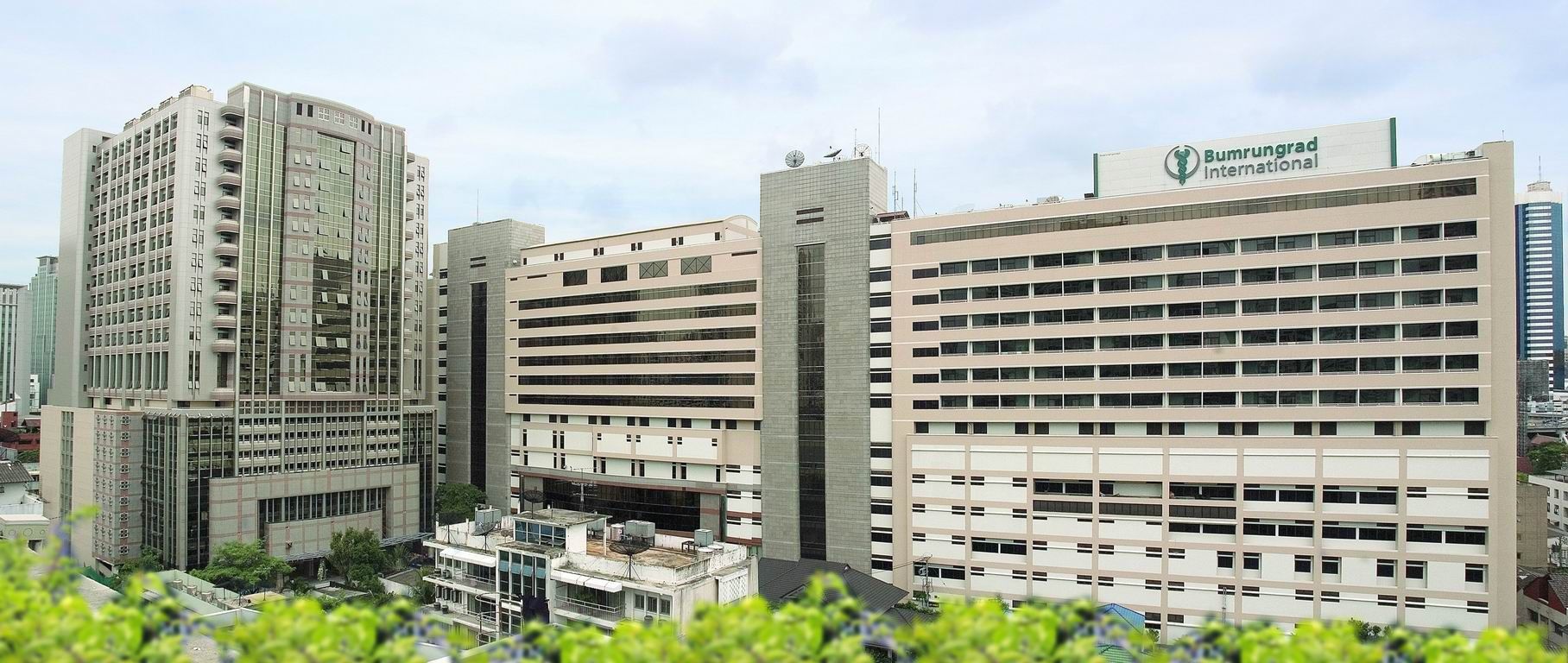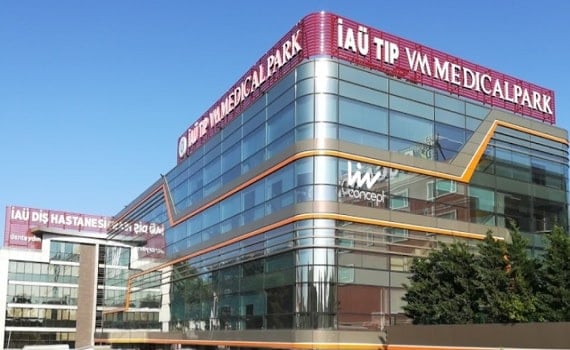Orthopaedic
Ankle Arthrodesis Treatment
Ankle fusion
Ankle arthrodesis is a type of surgery which is required to fuse the bones of the ankle into one piece. It’s also known as ankle fusion. The surgery is generally performed for treating arthritis in the ankle. It is the place where the shinbone rests on top of a bone of the foot known as the talus. Arthritis occurs when the smooth cartilage on the surface of the bones wears away with time.
What is Ankle Arthrodesis?
Ankle arthrodesis is a type of surgery which is required to fuse the bones of the ankle into one piece. It’s also known as ankle fusion. The surgery is generally performed for treating arthritis in the ankle. It is the place where the shinbone rests on top of a bone of the foot known as the talus. Arthritis occurs when the smooth cartilage on the surface of the bones wears away with time. This results in inflammation, swelling, and pain in the patient’s joint. Ankle arthrodesis helps in stopping the pain and swelling. The surgeon will make a cut in the patient’s ankle to work on the joint. The surgeon will then compress the bones together. The surgeon will attach bones with the help of nails, screws, plates, or other hardware. The healthcare provider can also use a bone graft which helps the bones to heal together. In some of the cases, an ankle fusion can be performed with minimally invasive surgery. This uses a smaller cut and a tiny camera is used, which helps in performing the surgery.
Benefits of Ankle Fusion
The aim of ankle fusion is to reduce the pain and restore the functioning of the affected ankle. Though some may worry that there is motion lost with a fusion, many patients tend to forget that they have already lost range of motion due to the severely damaged ankle. A fusion should last a lifetime as compared to an ankle replacement, which may wear out after some time.
- Pain relief
- The fused joint is stable again
- Patients will be able to carry weight on the fused joint without any discomfort
- Ability to walk and perform day to day activities is being restored
Why might One require an ankle fusion?
The patients may require an ankle fusion if they have severe arthritis in their ankle. It can cause symptoms such as inflammation, stiffness, and severe pain.
These can make walking hard to do. The three main types of ankle arthritis are:
- Osteoarthritis: Osteoarthritis is caused by wear and tear with the time
- Rheumatoid arthritis: Rheumatoid arthritis is caused by an autoimmune disease that affects the joints
- Arthritis from a previous injury of the joint
If the patients have mild or moderate arthritis, their healthcare provider will likely advise other treatments first. These may involve corticosteroid injections and pain medicines. The patients may be given special shoes or shoe inserts. Or the patient’s healthcare provider may suggest physical therapy. If the patients still have severe symptoms that hinder their day to day activities, the patient’s healthcare provider may recommend an ankle fusion surgery.
Symptoms leading to Ankle Arthrodesis Treatment
Ankle arthrodesis treatment (ankle fusion treatment) is a kind of operation done to remove the joint and lock the bones of the ankle together in order to decrease pain or instability. It is usually prescribed when all the other methods of treatment seem to have yielded no positive results.
Here are the primary symptoms that may lead a patient and their healthcare provider to consider ankle arthrodesis:
- Severe Ankle Pain
- Loss of Ankle Function and Mobility
- Joint Deformity
- Swelling and Inflammation
- Instability of the Ankle Joint
What are the risks of ankle fusion?
Like every other surgery have risks, ankle arthrodesis also some of the risks.
The risks due to ankle fusion are as follows:
- Infection
- Nearby nerves are being damaged
- Bleeding
- Blood clot
- The bones are not joined together in the correct way
- The bones are being misalignment
- New arthritis in nearby joints (this is a very common risk)
A normal side effect from ankle fusion is the limited range of motion in the joint. The patient’s risk of complications may vary based on their age and their general health. For example, if the people are a smoker or if they have low bone density, they may have a higher risk of certain complications. People with poorly controlled diabetes may also have a higher risk of complications. People must talk with their healthcare provider to learn which risks apply them the most.
Causes leading to Ankle Arthrodesis Surgery
Ankle arthrodesis or ankle fusion treatment is generally done for patients who have chronic painful and unstable ankle joint that cannot be controlled by other nonsurgical means.
The primary causes that lead to the need for this procedure include:
- Advanced Arthritis
- Severe Joint Injury or Trauma
- Chronic Ankle Instability
- Joint Deformities
- Failed Previous Ankle Surgery
- Infection of the Ankle Joint
- Avascular Necrosis
Facilities and Services offered for International Patients for Ankle Arthrodesis Surgery
Patients from different countries who require an ankle arthrodesis also embrace several unique services to achieve maximal support throughout admission and aftercare.
These facilities and services cater to the unique needs of international patients and may include:
- Pre-Arrival Assistance
- Travel and Visa Assistance
- Air Ambulance to India
- Airport Pick-up and Transportation
- Language Assistance
- Accommodation Services
- Advanced Medical Services
- Post-Operative Care
- Lifestyle Support
- Emergency Medical Evacuation
Pre-Treatment Process of Ankle Arthrodesis
It is also a set of assessments, consultations and preparations which must be carried out before the ankle arthrodesis – the ankle fusion – can be performed and the patient gets the most out of the operation. Here’s a typical pre-treatment process:
Initial Evaluation and Medical History
- Physical Examination
- Diagnostic Imaging
- Blood Tests and Medical Clearance
- Discussion of Treatment Options
- Patient Education
- Lifestyle Adjustments
- Preoperative Physical Therapy
- Preoperative Preparation
Diagnostic Tests for Ankle Arthrodesis Treatment
The diagnostic tests for ankle arthrodesis are very important in trying to establish whether the patient is suitable to undergo the ankle fusion procedure. These tests assist to determine the extent of joint degeneration, misaligned ligament or any other undiscovered condition that may hinder good results of any surgery.
Here’s an overview of the common diagnostic tests used before ankle arthrodesis:
- X-Rays
- CT Scan
- MRI
- Bone Scan
- Blood Tests
- Electrocardiogram
- Ankle Stress Test
Types of Ankle Arthrodesis:
Ankle arthrodesis is a surgical process that removes the surfaces of the ankle joint for the purpose of promoting fusion between the tibia and the talus. Fusion refers to the bones growing together; fusion is not only done on the ankle, but also on the other joints in the body that are very painful.
There are a couple of methods for the ankle fusion surgery, but the aim of each is the same, to fuse the ankle joint.
The Open Method
- A cut is made for opening the skin and accessing the joint.
- The joint is opened.
- A surgical saw is used for removal of the articular cartilage surfaces.
- Once the articular cartilage is being removed, the body is healed by fusing the joint.
- The incision must be accurate so that the bones are at the proper angle when they are brought together for the purpose of fusing.
- Screws and sometimes plates are used for holding bones together until they are fused.
- Generally, screws or pins are under the skin and are not removed.
- In some of the cases, an external fixator (pins on the outside of the skin) can be used.
The Arthroscopic Method
- The arthroscopic method employs an arthroscope.
- Through a small cut, the arthroscope, which holds a tiny TV camera, is being placed into the ankle joint.
- With the help of other instruments, cartilage is being removed through the tiny cut while the arthroscope is used for observing the progress of this surgery.
- After the surfaces are prepared, screws are placed for holding the bones together till they are healed.
- This method is not much different as compared to the open method other than smaller incisions are being used.
Post-Treatment Process of Ankle Arthrodesis
Ankle arthrodesis, also known as ankle fusion, is a complex surgical process, and its reformation process can be divided into several steps.
Here’s an overview of the typical post-operative process for ankle arthrodesis:
- Immediate Post-Operative Care
- Immobilization and Non-Weight Bearing
- Wound care and Follow-up Appointments
- Physical Therapy and Rehabilitation
- Lifestyle Modifications
- Monitoring Follow-up X-Rays
- Pain and Swelling Management
Ankle Fusion Revision Surgery
Ankle fusion revision surgery is the surgical procedure undertaken once the initial procedure of ankle arthrodesis or fusion did not attain the anticipated stability, pain control or alignment of the limb or if the complications developed affected the fused joint. Revision surgery may be challenging owing to scar tissue and soft tissue encroachment, and is done when there is intractable pain, non-union, misalignment, or if hardware such as screws, plates among others, have loosened or broken.
Foot and Ankle Fusion Surgery
Foot and Ankle fusion surgery is a surgical procedure that is used to join at least two bones in the foot and ankle so as to remove any movement in an affected joint. This operation is common in patients with pain, arthritis, deformity or instability of the foot or ankle that has not improved with other treatment methods. Through fusion of the bones, the procedure can cure pain, give the affected area stability and correct the position.
Pantalar Fusion Surgery
Pantalar fusion surgery is undergone by joining the talus, the bones of the ankle joint, to the bones of the foot such as the calcaneus, navicular bone and other bones of the midfoot. This kind of fusion surgery is usually done if other therapies for various structural abnormalities, instability or arthritis of the foot or ankle have not yielded satisfactory results. Pantalar fusion is a more aggressive type of fusion than either ankle or subtalar seeks to fix the entire ankle and hindfoot joint.
Success Rate of Ankle Arthrodesis Surgery
The success rate of an ankle arthrodesis operation is generally high and the majority of patients realize relief of pain, increased stability and enhanced functionality. The possibility to achieve 90 – 95% of fusion rate and 80 – 90% of pain relief makes it applicable for the patients with the severe arthritis, deformities or joint instabilities of the ankle. However, it is always important to look at patient specific characteristics and always want to talk to the surgeon about what was expected and what are the possible complications.
Recovering from Ankle Fusion
- The operated leg is being wrapped in a padded plaster cast after the surgery is being performed.
- After 2 weeks, a shorter cast is being replaced with the padded plaster cast.
- The patient cannot carry weight on the ankle up to 12 weeks.
- The patients must keep their leg elevated; this prevents or reduces leg swelling.
- Crutches are often necessary while the patient avoids putting weight on their ankle.
- X-rays, taken usually, will show if the fusion is becoming stronger and solid with time or not.
- At that point, the patient is being permitted to put more weight on the ankle as they walk.
- Some patients may require special shoe inserts, which help them to walk more normally, while many of the patients simply wear flat shoes and do just fine.
Best Hospitals for Ankle Arthrodesis Surgery
- Artemis Hospital, Gurgaon
- Medanta The Medicity
- Fortis Memorial Research Institute, Gurgaon
- Max Hospital, Saket
- BLK-Max Super Speciality Hospital, Delhi
Best Doctors for Ankle Arthrodesis Surgery
- Dr. I P S Oberoi
- Dr. Ashok Rajgopal
- Dr. Jayant Arora
- Dr. Kamal Dureja
- Dr. Pueet Girdhar
Why Choose GetWellGo for Ankle Arthrodesis Surgery?
Getting the surgeries at GetWellGo has several obvious benefits, for an ankle arthrodesis surgery. GetWellGo is famous for its good healthcare services that have involved the doctor’s specialization, modern medical equipment, and an individual approach to patients.
Here are the key reasons why GetWellGo can be an ideal choice for ankle arthrodesis surgery:
- Expert Surgeons and Medical Team
- State-of-The-Art Facilities and Technology
- Affordable Treatment Options
- Post-Surgery Rehabilitation and Follow-up Care
- Accommodation and Travel Services
- Multilingual Support
- Visa Assistance
Conclusion
Ankle arthrodesis is the surgical intended on the fusion of the bones in the area of the ankle joint to minimize pain, increase stability and enhance the patient’s ability to bear weight. They possess a favorable prognosis that is especially relevant to patients with progressive diseases such as arthritis or post-traumatic alterations. The biggest advantage is that patient experiences less pain and hence lives a better life. The surgery is proven relatively safe, with 80-95% of the patient experiencing much-improved pain and functionality. However, perhaps due to fusion of the ankle joint, the patient may be unable to perform some activities within the home as anticipated. The use of wires takes 3-6 months to heal completely, 6-12 months for full recovery, and serious problems like infection, failure to union, problems with implant, and injury to nerves or blood vessels in the extremities.
FAQ
1. What are the advantages of ankle arthrodesis surgery?
- Pain Relief: The most important advantage of ankle arthrodesis is pain relief. They are very likely to receive significant pain relief after the procedure has been done on them.
- Improved Stability: Thus, combining the joints back provides ankle stability which is appreciated mostly by patients with unstable or degenerative joints.
- Restored Function: Although the joint is no longer mobile, 90% of patients can experience comfortable walking, sitting, and weight-bearing activities as well as low-impact movement.
- Long-Term Relief: The fusion offer lasting relief and stability for those patients who have severe arthritis or post-traumatic joint damage.
2. What kind of outcomes do the patients with ankle arthrodesis surgery have?
- Fusion Success Rate: It is commonly found that the success rate for attaining good bone fusion is usually about 90-95%. There is usually full fusion whatever the type of graft used within 6 to 12 months in the majority of patients.
- Pain Relief and Function: Close to 80 to 90% of patients appears to experience a great deal of pain relief and better function after undergoing surgery. It has been established that the procedure offered is very effective when it comes to chronic pain control.
3. What is the duration of recovery after ankle arthrodesis surgery?
-
Healing time may differ but fusion of the bones may take between 6 to 12 months of the injury. At the initial first to third months of the treatment, patients will be advised to off-load their foot, by the end of the eighth to twelfth week they will start to apply loads gradually as the fusion takes place. Regeneration of strength and other joints, and the aptitude to undertake usual tasks with slight pain are parts of the complete recovery.
TREATMENT-RELATED QUESTIONS
GetWellGo will provide you end-to-end guidance and assistance and that will include finding relevant and the best doctors for you in India.
A relationship manager from GetWellGo will be assigned to you who will prepare your case, share with multiple doctors and hospitals and get back to you with a treatment plan, cost of treatment and other useful information. The relationship manager will take care of all details related to your visit and successful return & recovery.
Yes, if you wish GetWellGo can assist you in getting your appointments fixed with multiple doctors and hospitals, which will assist you in getting the second opinion and will help you in cost comparison as well.
Yes, our professional medical team will help you in getting the estimated cost for the treatment. The cost as you may be aware depends on the medical condition, the choice of treatment, the type of room opted for etc. All your medical history and essential treatment details would be analyzed by the team of experts in the hospitals. They will also provide you with the various types of rooms/accommodation packages available and you have to make the selection. Charges are likely to vary by the type of room you take.
You have to check with your health insurance provider for the details.
The price that you get from GetWellGo is directly from the hospital, it is also discounted and lowest possible in most cases. We help you in getting the best price possible.
No, we don't charge patients for any service or convenience fee. All healthcare services GetWellGo provide are free of cost.
Top Doctors for Orthopaedic
Top Hospitals for Orthopaedic
Contact Us Now!
Fill the form below to get in touch with our experts.



.jpg)



